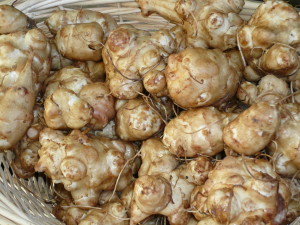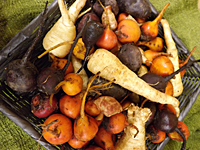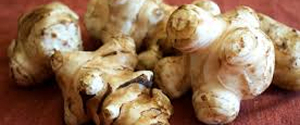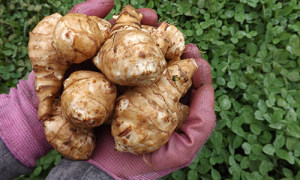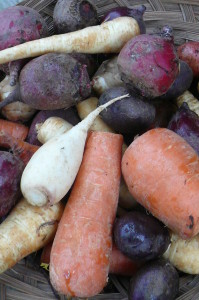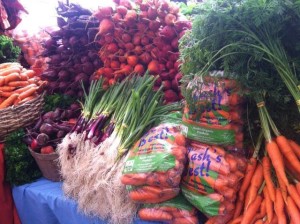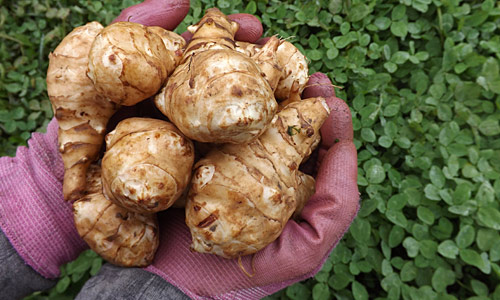
1½ lbs sunchokes (a.k.a. Jerusalem artichokes), thoroughly scrubbed and cut into ½-inch dice
1 teaspoon ground dried turmeric
1 ounces garlic (about 8 cloves), chopped
½ ounce fresh ginger, minced (about 1 ½ tablespoons)
1 teaspoon cumin seeds
2 teaspoons pickling salt
2 teaspoons sugar
1½ cups water
Toss together sunchokes, turmeric, garlic, ginger, and cumin. Pack the mixture into a jar with a capacity of at least 6 cups. Dissolve salt and sugar in the water. Pour brine over sunchoke mixture; it will not cover them at first. Add a brine bag (a gallon freezer-weight plastic bag containing 1 tablespoon salt dissolved in 3 cups water) or another suitable weight.
The next day the brine should cover the sunchokes. If it doesn’t, add more brine mixed in the same proportions.
Wait several days before tasting the pickle. After a week, the brine will be still sour, and the Jerusalem artichokes pleasantly, mildly spicy and still crunchy.
When the pickle has fermented enough to suit your taste, store the jar in the refrigerator. Keep sunchokes weighted and under the brine so they won’t take on a grayish cast.
We thank agardenerstable.com for this recipe.
Have you tried this recipe? Tell us how it turned out!

